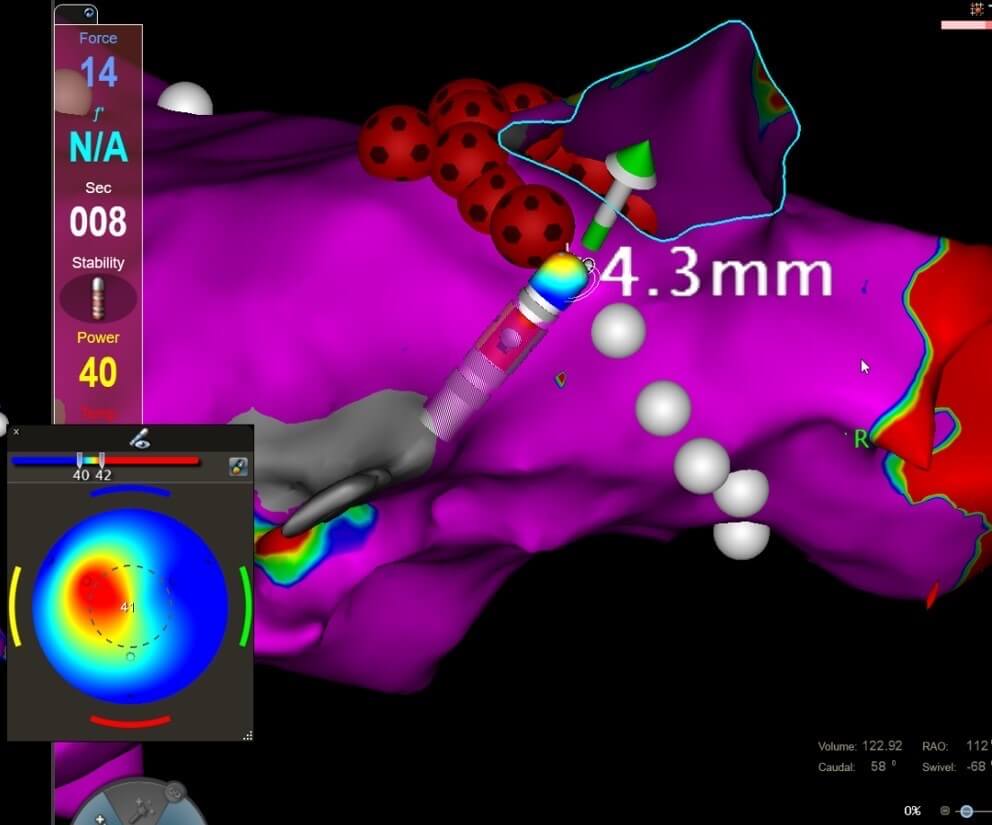This month, the University of Ottawa Heart Institute (UOHI) performed the first patient procedures in North America using a new technology that is expected to reduce wait times for ablations while making these procedures quicker and safer.

The QDOT MICRO® technology – developed by Biosense Webster Inc. – has been proven to reduce total procedure times without compromising clinical outcomes. A feature of this technology is a temperature-controlled ablation mode that allows 90 watts of radiofrequency power for up to four seconds. Current practice with irrigated catheters involves the delivery of only moderate power (20 to 40 watts) for as long as 40 seconds.
“The most important advantage is improving the safety of catheter ablation procedures for atrial fibrillation without affecting the success rates of this procedure. Shorter procedures can help reduce wait time for catheter ablation and is an additional important and meaningful benefit of this new technology,” said Girish Nair, MBBS, MSc, director of the cardiac electrophysiology and arrythmia service at the UOHI, who performed the successful patient procedure earlier this month. “As the first in North America to perform the procedure using this technology, the University of Ottawa Heart Institute is leading the way in treating cardiac arrhythmias and collaborating with industry partners to improve patient care.”

Atrial fibrillation (AF) is the most common arrhythmia, affecting approximately more than 200,000 Canadians. Catheter ablation is often a recommended treatment option for patients with the condition. It is associated with reductions in AF burden, AF-related complications as well as significant improvement in patient quality of life, with studies showing improvements of more than 50 percent.
Biosense Webster Inc. contributes to the science of diagnosing and treating heart rhythm disorders and is part of the Johnson & Johnson Family of Companies. The company partners with clinicians to develop innovative technologies that improve the quality of care for arrhythmia patients worldwide.
For more information, please visit the Biosense Webster announcement. To schedule an interview with Dr. Girish Nair, please contact the liaison below.
Media contact
Leigh B. Morris
Communications Officer
University of Ottawa Heart Institute
613-316-6409 (cell)
Lmorris@ottawaheart.ca

